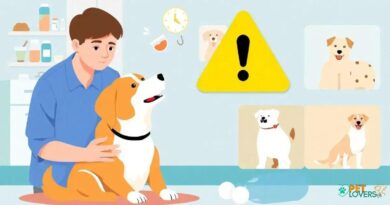What is adoption process
What is the Adoption Process?
The adoption process refers to the series of steps that individuals or families must follow to adopt a pet, particularly dogs. This process is designed to ensure that the animal is placed in a suitable home where it will receive the care and love it deserves. Understanding the adoption process is crucial for potential adopters as it helps them prepare for the responsibilities that come with pet ownership.
Step 1: Research and Preparation
The first step in the adoption process is conducting thorough research. Prospective adopters should familiarize themselves with different dog breeds, their temperaments, and care requirements. This knowledge helps in selecting a dog that fits well with the adopter’s lifestyle. Additionally, potential adopters should assess their living situation, financial capacity, and time availability to ensure they can provide a stable environment for the new pet.
Step 2: Finding a Reputable Shelter or Rescue
Once the research is complete, the next step is to find a reputable animal shelter or rescue organization. Many organizations have websites where they list available dogs for adoption, along with their backgrounds and personalities. It’s important to choose a shelter that prioritizes the well-being of the animals and follows ethical adoption practices. Visiting local shelters can also provide a chance to interact with dogs and get a feel for their behavior.
Step 3: Application Process
After selecting a shelter, potential adopters must fill out an adoption application. This application typically includes questions about the adopter’s living situation, previous pet ownership experience, and how they plan to care for the dog. Shelters use this information to assess whether the applicant is a good match for the dog they wish to adopt. Honesty in this step is crucial, as it helps ensure the best fit for both the dog and the adopter.
Step 4: Home Visit and Interview
Many shelters conduct a home visit or interview as part of the adoption process. This step allows shelter staff to evaluate the living conditions and ensure they are safe and suitable for a dog. During the interview, staff may ask about the adopter’s lifestyle, daily routine, and how they plan to integrate the new pet into their home. This step is essential for ensuring that the dog will be placed in a loving and secure environment.
Step 5: Meet and Greet
A meet and greet is often arranged between the potential adopter and the dog they are interested in. This interaction is crucial as it allows both the dog and the adopter to assess their compatibility. Observing how the dog reacts to the adopter and vice versa can provide valuable insights into whether they will bond well. It’s important for adopters to take their time during this step to ensure a good match.
Step 6: Adoption Fee and Finalization
If the meet and greet is successful, the next step involves paying an adoption fee. This fee helps cover the costs of the dog’s care, vaccinations, and spaying or neutering. After the fee is paid, the adoption is finalized, and the new pet parent will receive important documents, including the dog’s medical history and any necessary information about its care. This step marks the official beginning of the new relationship between the adopter and the dog.
Step 7: Post-Adoption Support
Many shelters offer post-adoption support to help new pet owners transition smoothly. This support can include training resources, behavioral advice, and access to veterinary services. It’s important for adopters to take advantage of these resources, as they can help address any challenges that may arise after bringing the dog home. Building a strong foundation during this period is vital for a successful long-term relationship.
Step 8: Ongoing Commitment
Adopting a dog is a long-term commitment that requires ongoing care, love, and attention. The adoption process does not end once the dog is brought home; rather, it marks the beginning of a new chapter in both the adopter’s and the dog’s life. Regular veterinary check-ups, proper training, and socialization are essential components of responsible pet ownership. Understanding this commitment is key to ensuring a happy and fulfilling life for the adopted dog.



